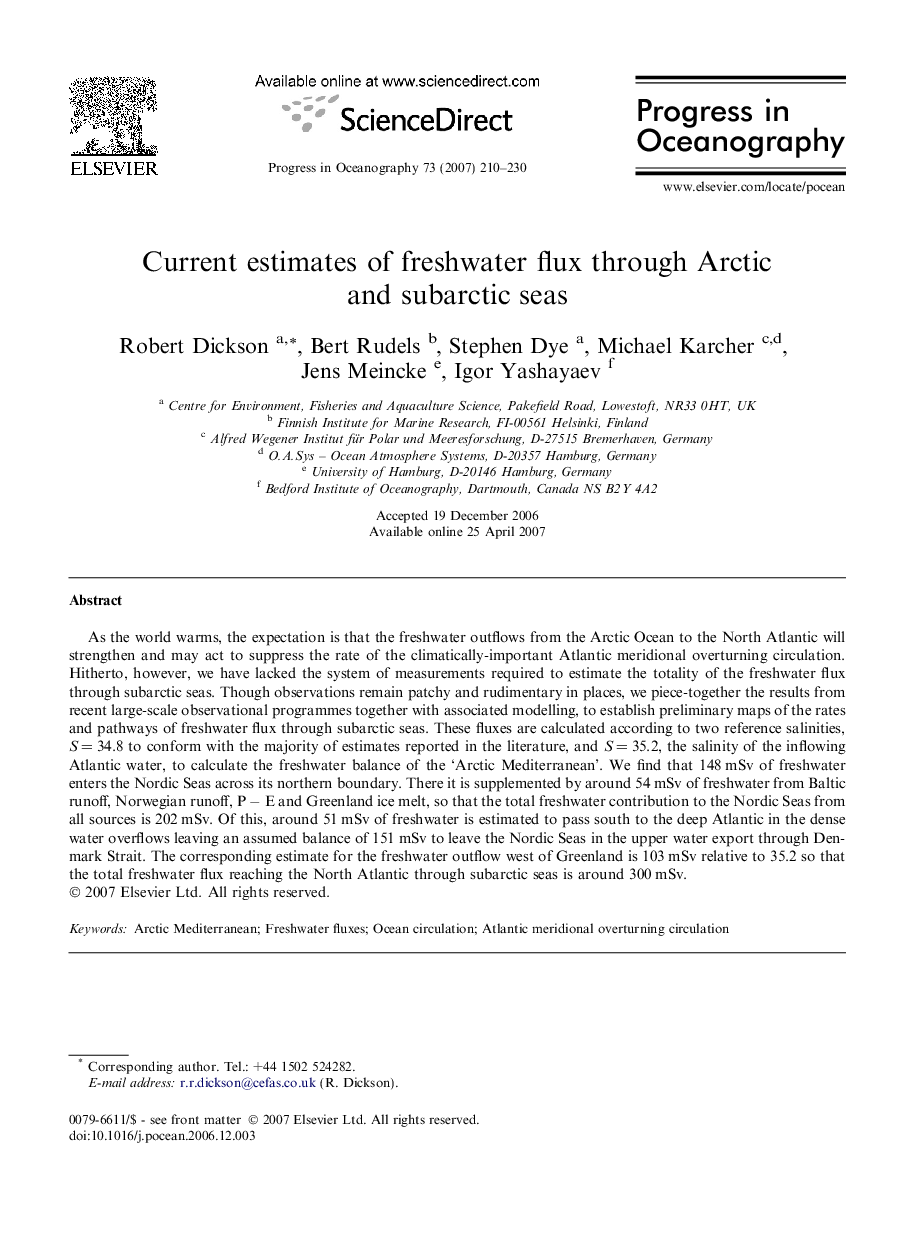| Article ID | Journal | Published Year | Pages | File Type |
|---|---|---|---|---|
| 4553852 | Progress in Oceanography | 2007 | 21 Pages |
As the world warms, the expectation is that the freshwater outflows from the Arctic Ocean to the North Atlantic will strengthen and may act to suppress the rate of the climatically-important Atlantic meridional overturning circulation. Hitherto, however, we have lacked the system of measurements required to estimate the totality of the freshwater flux through subarctic seas. Though observations remain patchy and rudimentary in places, we piece-together the results from recent large-scale observational programmes together with associated modelling, to establish preliminary maps of the rates and pathways of freshwater flux through subarctic seas. These fluxes are calculated according to two reference salinities, S = 34.8 to conform with the majority of estimates reported in the literature, and S = 35.2, the salinity of the inflowing Atlantic water, to calculate the freshwater balance of the ‘Arctic Mediterranean’. We find that 148 mSv of freshwater enters the Nordic Seas across its northern boundary. There it is supplemented by around 54 mSv of freshwater from Baltic runoff, Norwegian runoff, P − E and Greenland ice melt, so that the total freshwater contribution to the Nordic Seas from all sources is 202 mSv. Of this, around 51 mSv of freshwater is estimated to pass south to the deep Atlantic in the dense water overflows leaving an assumed balance of 151 mSv to leave the Nordic Seas in the upper water export through Denmark Strait. The corresponding estimate for the freshwater outflow west of Greenland is 103 mSv relative to 35.2 so that the total freshwater flux reaching the North Atlantic through subarctic seas is around 300 mSv.
